Physical Address
304 North Cardinal St.
Dorchester Center, MA 02124
The anatomy ( Fig. 52.1 ), physiology, and pathophysiology of the pupillary pathways are important to the pediatric ophthalmologist, but they are dealt with so excellently elsewhere that only aspects relevant to children will be discussed here.
The pupillary light response is absent in infants of 29 gestational weeks or less, but is usually present by 31 or 32 weeks. At birth, the pupil is small. It enlarges in the first months and is probably largest at the end of the first decade, gradually becoming more miotic with age. The pupil reactions of term or premature infants are often small in amplitude and, because of their small resting size, may be difficult to elicit clinically, especially with brown irides. The failure of the pupil grating response in infants under 1 month of age is further evidence of the immaturity of the pupil responses in infancy. Topical cocaine and hydroxyamphetamine are less potent in infants, suggesting that decreased sympathetic tone underlies miosis of the newborn. In very premature babies, the pupil may not have fully formed; during the seventh month of gestation, the vascular pupillary membrane atrophies, and the pupil appears. Before 32 weeks' gestation, mydriasis does not necessarily indicate a central nervous system lesion, nor does an unresponsive pupil necessarily indicate an afferent defect.
Dynamic retinoscopy indicates that infants from 6 days to 1 month of age have no accommodation, but that normal function is achieved by 3–4 months. As a result, higher spatial frequencies are defocused, and younger infants cannot discriminate them. However, photorefraction studies have demonstrated accommodation of over 1 diopter in the neonate, and this ability increases rapidly in the first month and to a lesser extent in the first few years of life, with high amplitudes from 4 years until presbyopia develops.
The near reflex is activated when looking from a distant to a near target. It comprises a triad of convergence of the eyes, accommodation of the lenses, and miosis of the pupils; these components are separate in origin, but linked as a synkinetic response. The afferent pathway of the near reflex is probably more ventrally located than the pretectal afferent pathway of the light reflex. Both reflexes share the final efferent pathways of the Edinger–Westphal nucleus, the oculomotor nerve, ciliary ganglion, and the short posterior ciliary nerves. Though the final efferent pathway is common, visual cortex and multiple midbrain nuclei are responsible for generating and associating signals for vision accommodation during the near reflex.
In uncooperative children, testing of the near pupil response is more difficult than the light response. A suitable fixation target, for example a small internally lit toy for an infant, a mobile toy with sufficient detail to stimulate convergence, or letters or numbers for a literate child, is the most important factor in testing.
Congenital, structural, and developmental anomalies of the pupil include the following (many are found in Chapters 31 and 37 ):
aniridia
micropupil (congenital idiopathic microcoria)
polycoria and corectopia
coloboma
peninsula pupil (an inherited partial iris sphincter atrophy with dilated oval pupils)
persistent pupillary membrane
congenital mydriasis and miosis
irregular pupils
abnormalities of iris color (heterochromia iridis)
unequal size (anisocoria).
The afferent pupil defect is an ocular sensory disorder in which the processing of visual input is disrupted at some stage in the afferent pathway. Issues in the afferent pathway can have a number of causes, ranging from retinal detachment to optic nerve compression or demyelination or other lesions in the visual pathway, that may result in a slowing of the direct pupillary response.
A totally blind (“amaurotic”) eye resulting from ocular disease usually has no pupil reaction to a light shone in it (amaurotic pupil), but a normal near reaction if the efferent system is intact. In monocular blindness, the affected eye has no direct pupil reaction but has consensual response to light shone into the unaffected eye (amaurotic pupil reaction). In binocular blindness from anterior visual pathway or retinal disease, both pupils are usually dilated, although they may be nearly normal size in longstanding blindness. If the efferent pupil pathway is intact, then the pupils will still react to near stimuli (light−near dissociation).
When one afferent pathway is affected or if bilateral afferent pathways are affected asymmetrically, the relative afferent pupil defect (RAPD) in the afferent pupil pathway can be detected clinically with the “swinging flashlight” test.
The RAPD is the clinical sign used to detect a defect in the afferent pupillary pathway (i.e. an afferent pupil defect [APD]). The RAPD serves as a useful tool to highlight any difference in the afferent pathway between the two eyes. The RAPD and the APD should not be used interchangeably; the RAPD is the clinical sign of an APD. Patients with only one eye can still have an APD without an RAPD. Patients with bilateral, symmetric disease will not have an RAPD.
In dim lighting, the observer shines a bright light into each eye individually. The child should fixate at distance to relax the accommodative pupil response.
The light is swung between the two eyes (i.e. “the swinging flashlight test”) with one second on each eye. If the afferent pupil pathway of one eye has a defect, the direct response will be less than the consensual reaction driven by the fellow eye, and the pupil of the affected eye will dilate as the light swings from the unaffected to the affected eye (i.e. a relative afferent pupillary defect). The RAPD can be graded subjectively from I through V. Grade I reflects a weak initial constriction and redilatation; grade II is initial stall and redilatation; grade III is immediate dilatation; grade IV is immediate dilatation following prolonged illumination; grade V is immediate dilatation with no constriction. Grade V RAPD reflects an amaurotic pupil. Magnification provided by a slit-lamp may help detect a minimal defect in an older, more cooperative child. In situations with a known unilateral efferent pupillary defect or opacity precluding evaluation of one pupil, testing for the RAPD can still be performed. In this setting, a second light is held below the normal pupil. As the light swings from the affected eye to the unaffected eye, the normal pupil constricts, and when the light swings to the affected eye, the normal pupil will dilate. The RAPD is usually attributed to Robert Marcus Gunn who described sequential pupillary assessment with a bright light; the swinging light test is much more sensitive in detecting mild-to-moderate afferent defects.
An RAPD is objective evidence for an asymmetric lesion of the afferent pathway anywhere from the retina to the intercalated neurons of the midbrain pretectal nuclei. Thus, rarely a patient may have an RAPD (tectal RAPD) from a pretectal lesion without any visual loss (i.e. normal visual acuity, normal visual field, and normal fundus exam) because the afferent pupil fibers to the pretectal nuclei exit the optic tract distinctly from the visual pathway to the lateral geniculate nucleus. Although uncommon, a small RAPD may occur in deeply amblyopic eyes. In older children, a useful subjective addition to testing for the RAPD is asking the child in which eye the light is brighter. The child may be asked a question, “If the light in the good eye is worth 1 dollar/pound, how many cents/pennies is the other one worth?” which may give a rough subjective quantification of an RAPD.
Light–near dissociation is present when the pupil reacts better to a near than to a light stimulus. Defects in either the afferent or efferent pupillary pathway can produce light−near dissociation. In patients with symmetrical bilateral afferent disease, an APD might be difficult or impossible to detect. In these situations, it is especially important to look for light−near dissociation as potential evidence of afferent disease helping to localize the lesion.
In 1869, Douglas Argyll Robertson described a type of light−near dissociation classically seen with tertiary syphilis. The pupils are small, irregular, and constrict more fully and more briskly to a near stimulus than to light (the pupils go from “small to pinpoint”). The iris is often slightly atrophic on slit-lamp examination. The lesion causing the Argyll Robertson pupil is presumed to be located in the dorsal midbrain, but it may also lie in the ciliary ganglion or nerves within the orbit. Patients with such pupils should undergo serologic testing for syphilis.
Expanding lesions dorsal to the Sylvian aqueduct in children include pinealomas, ependymomas, “trilateral” retinoblastoma, granulomas, hydrocephalus, cystic and other lesions. Compression of the dorsal midbrain produces light–near dissociation that may include a vertical gaze palsy (typically upgaze palsy), lid retraction (Collier sign), accommodation defects, and convergence–retraction nystagmus. The resting size of the pupils is usually larger than normal. Sometimes, especially with rapidly enlarging tumors, the pupils may be large and poorly reactive to light or near stimuli.
Adie syndrome, unusual in young children, is typically idiopathic, but may occur with chickenpox or other viral infections, ophthalmoplegic migraine, and measles vaccination. It is more frequent in young women. It is usually unilateral, but many cases become bilateral. Children rarely have symptoms related to the onset, but they may fail a school near vision test or complain of blurred near or, if they are hyperopic, distant vision or photophobia. They may develop anisometropic amblyopia. Many patients are asymptomatic, and parents may be the first to notice.
The acutely affected pupil is usually larger than that of the uninvolved eye ( Fig. 52.2 ), but over time the Adie pupil tends to become miotic (“little old Adie”). There is typically a segmental paralysis of the iris sphincter, which might be extensive or diffuse. Once constricted, the pupil remains constricted longer (the “tonic” pupil). There may also be a transient defect in accommodation, which is often marked at first, but gradually improves over 2 or more years. Corneal sensation may be reduced when tested with an esthesiometer or with a wisp of cotton.
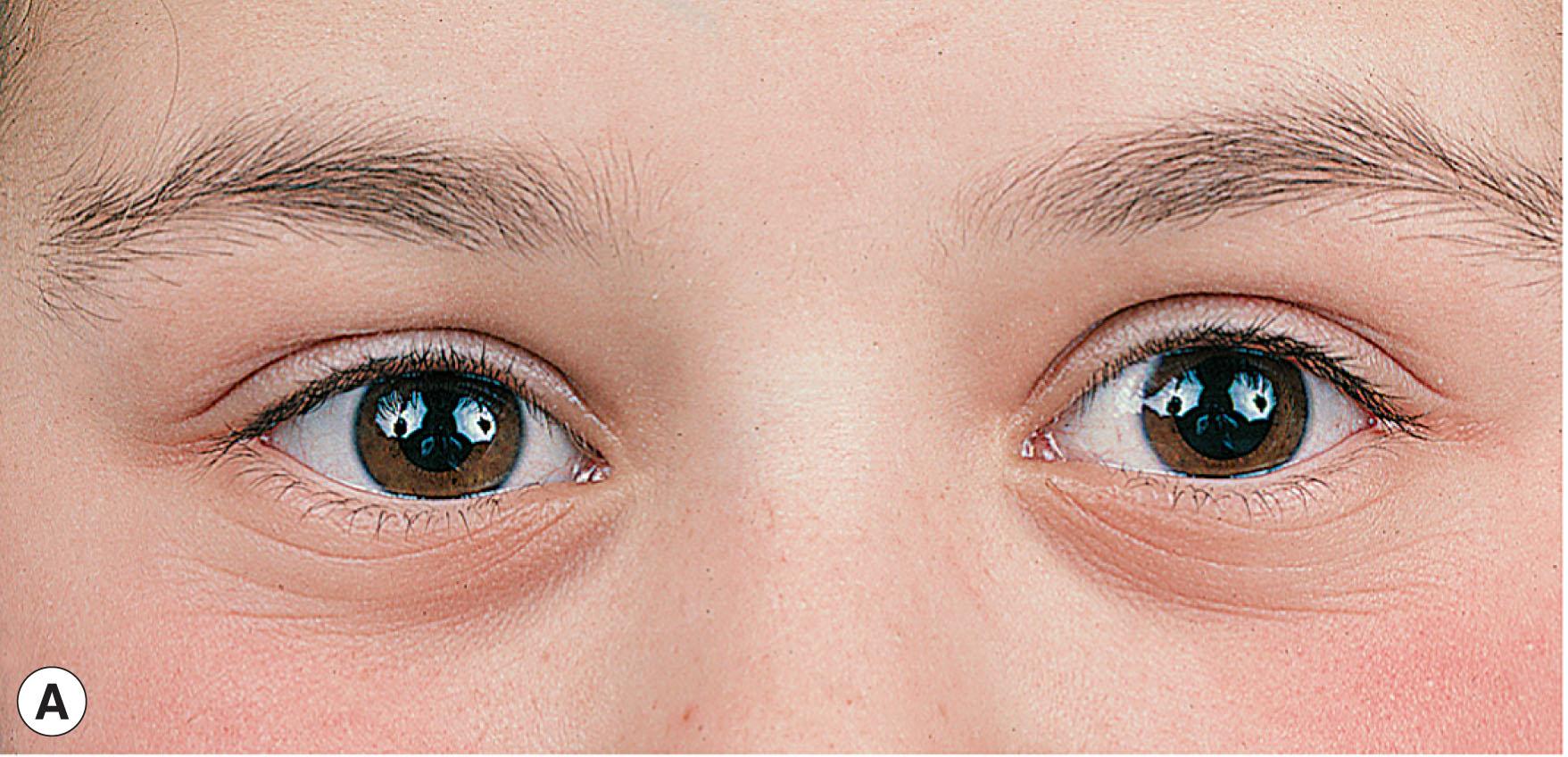
This finding is probably due to damage to the trigeminal fibers that also pass through the ciliary ganglion. Patients with Adie pupil may also have hyporeflexia or areflexia in their extremities. Holmes–Adie syndrome may also rarely have systemic autonomic deficits, including orthostatic hypotension and impaired cardiovascular reflexes. Although the Adie pupil is a clinical diagnosis, denervation hypersensitivity of the pupil may be demonstrated by observing pupillary constriction compared to the fellow eye 20 minutes after bilateral instillation of pilocarpine 0.0625%. However, pharmacological denervation hypersensitivity may occur with post- and pre-ciliary ganglionic lesions ( Fig. 52.3 ), and should not be used in isolation to differentiate the etiology for anisocoria (e.g. Adie pupil vs. third nerve palsy).
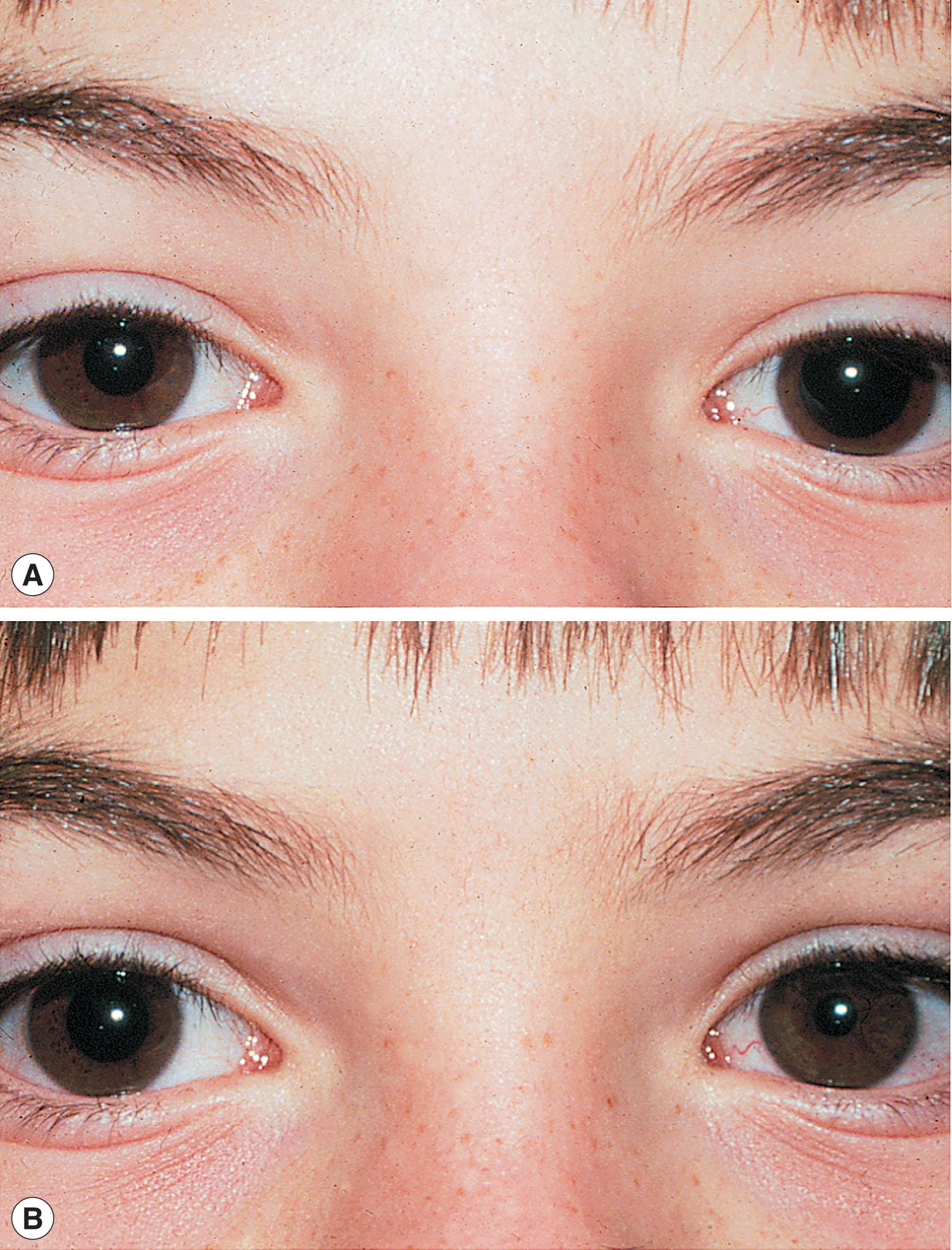
Loewenfeld and Thompson proposed that the ciliary ganglion is the site of the lesion of the tonic pupil and that many of its features result from aberrant regeneration. The cause is unknown, but it may be a neurotropic virus. Most patients do not require treatment, but pilocarpine (0.1% three times daily) or another dilute miotic may help with photophobia and occasionally with symptoms secondary to accommodation paresis. Since the reduced accommodation results in blur at near and, in hypermetropic children, in the distance also, young children with Adie or other tonic pupils should be prescribed the full hypermetropic refractive error identified with a cycloplegic refraction. They should also have the unaffected (or better) eye occluded for a short period each day to avoid amblyopia.
Although Adie syndrome is the classic idiopathic tonic pupil, other etiologies of ciliary ganglion damage cause a similar syndrome. Congenital or acquired tonic pupils have been described in infants with: orbital tumors; traumatic, infectious, or inflammatory diseases; or as part of a variety of widespread neuropathies including syphilis, diabetes, Guillain–Barré syndrome, Miller Fisher syndrome, pandysautonomia, hereditary sensory neuropathy, Charcot–Marie–Tooth disease, and trilene poisoning. Autonomic neuropathy secondary to paraneoplastic disease has also caused tonic pupils.
Damage to the iris by trauma, irradiation, uveitis, ischemia or hemorrhage, or involvement with a tumor such as lymphoma, leukemia, juvenile xanthogranuloma, leiomyoma, or neurofibroma, may all give rise to anisocoria, corectopia, and/or impaired pupil reactions ( Fig. 52.4 ). Slit-lamp examination of the iris can demonstrate the disruption of the iris architecture from the underlying cause.
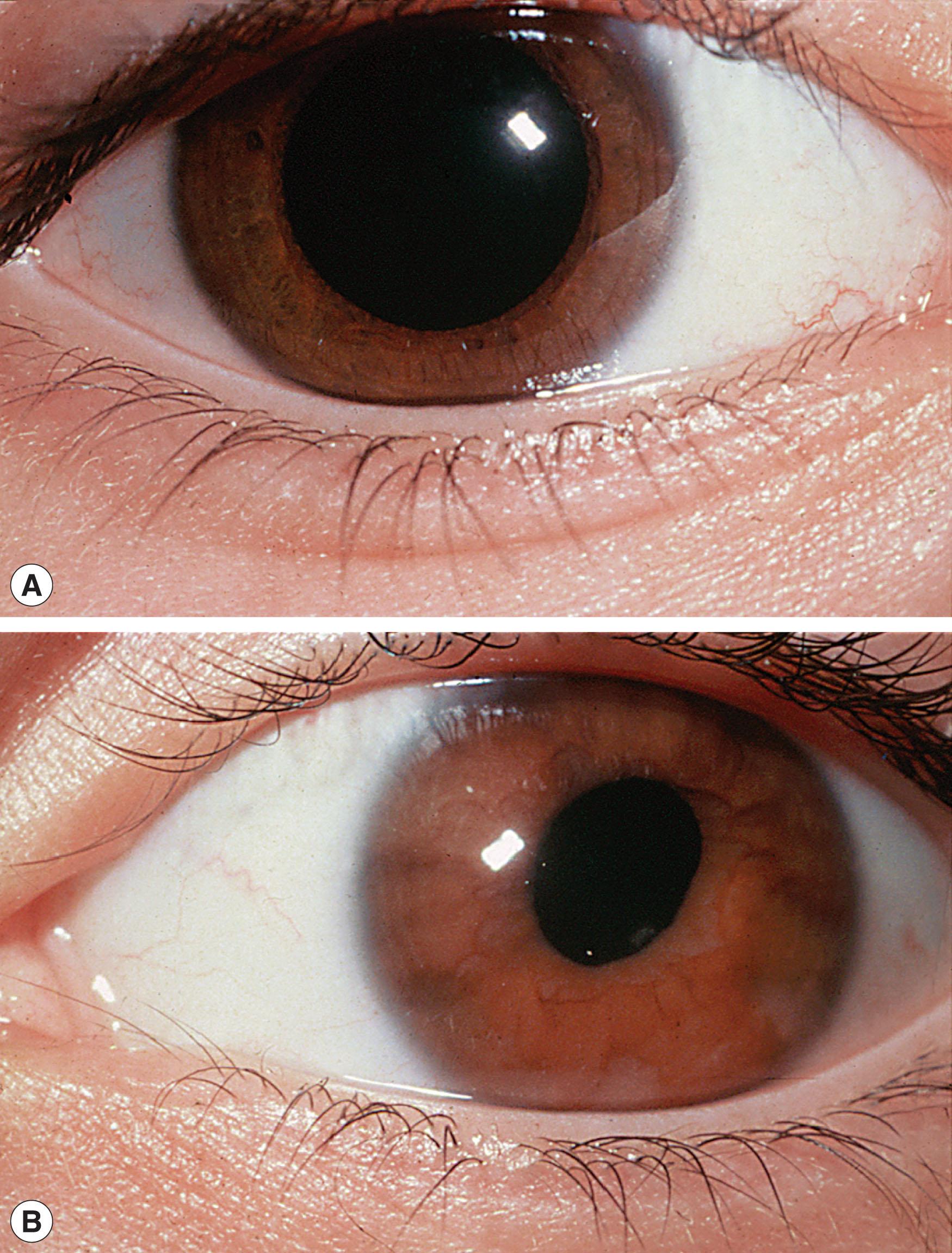
The syndrome of idiopathic episodic mydriasis is likely a heterogeneous group of conditions that result in parasympathetic insufficiency of the iris sphincter or sympathetic hyperactivity of the iris dilator. The pathophysiology is not fully understood, but is thought to be related closely to the pathophysiology of migraine, with transient ischemia of the ciliary ganglion and nerves; some clinicians consider the “springing pupil” to be a unique type of ophthalmoplegic migraine. In either case, anisocoria usually lasts for several hours and then resolves spontaneously. Other signs of oculomotor or sympathetic nerve dysfunction are absent, but the syndrome is frequently accompanied by headache or orbital pain. Although it affects primarily young women, it has been reported in both genders and many ages.
Damage to some midbrain pupillary fibers may lead to unequal upward and inward distortion of the pupil and an unequal sinuous pupil reaction to light and near stimuli. Corectopia can be congenital or acquired; acquired cases are typically secondary to significant damage to the midbrain. The patients described were often, but not always, comatose, and this condition usually carries a poor prognosis.
In complete third nerve palsy, the pupil is unreactive ( Fig. 52.5 ), but in partial or recovering third nerve palsy the ipsilateral pupil reaction may be sluggish or uneven. Patients with a poorly reactive pupil or anisocoria should have ocular motility and eyelid evaluation to exclude third nerve palsy.
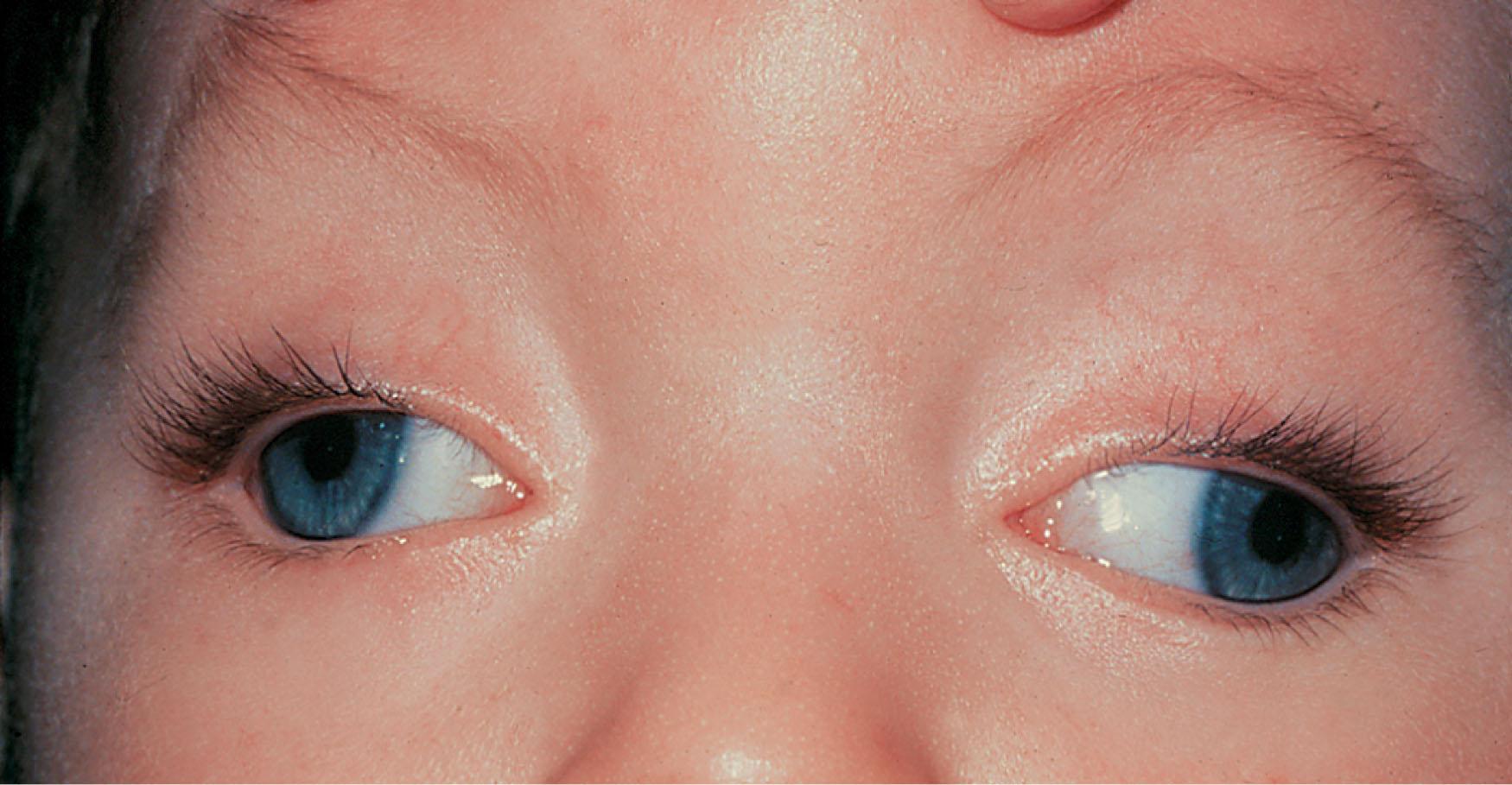
Abnormal pupillary contractions can occur in aberrant regeneration ( Fig. 52.6 ) following third nerve palsy. Due to mis-routing of motor nerve fibers intended for extraocular muscles (EOMs), the pupil may constrict with ocular ductions involving other EOMs supplied by the third nerve or may be smaller on the ipsilateral side ( Fig. 52.7 ).
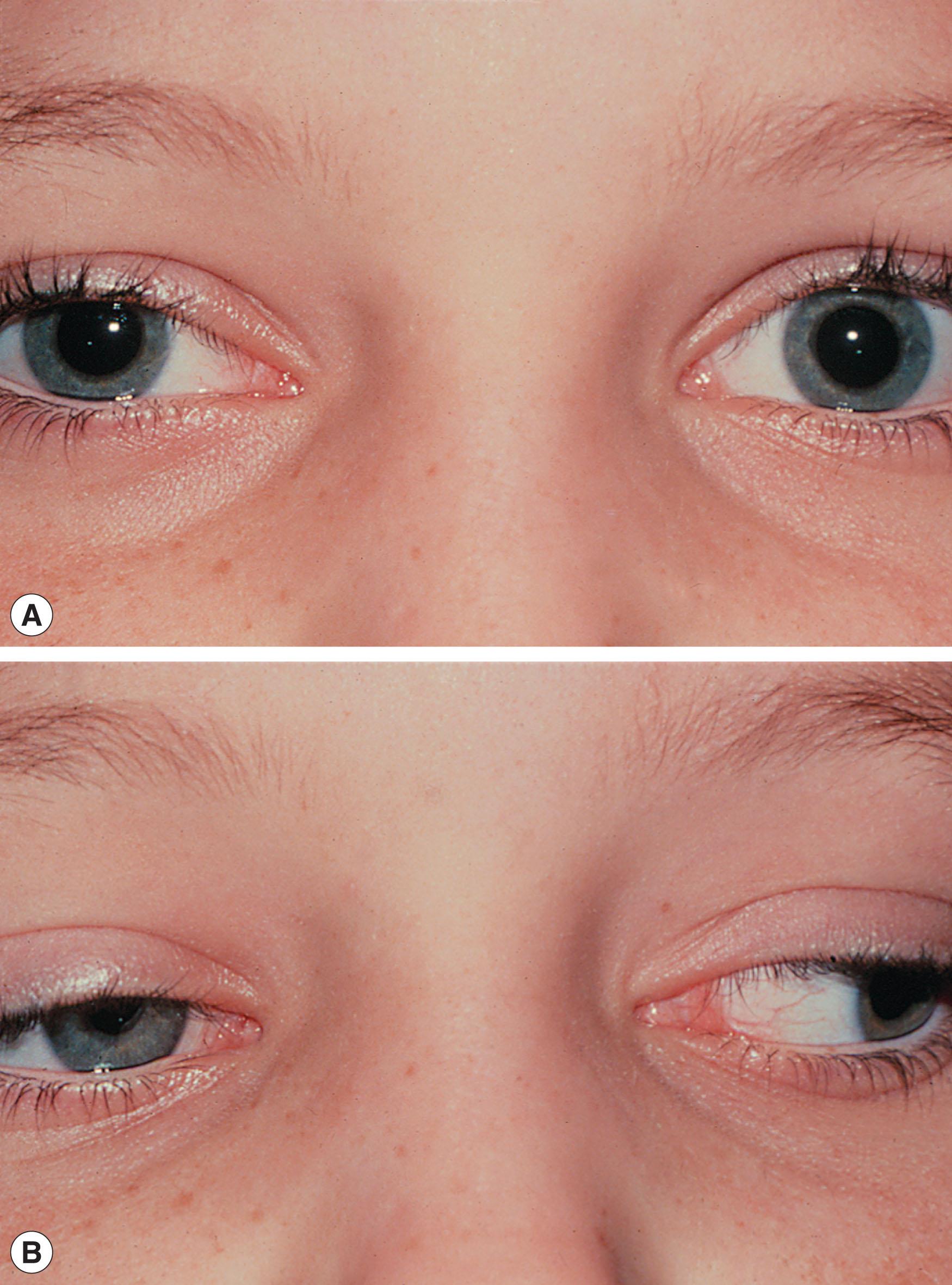
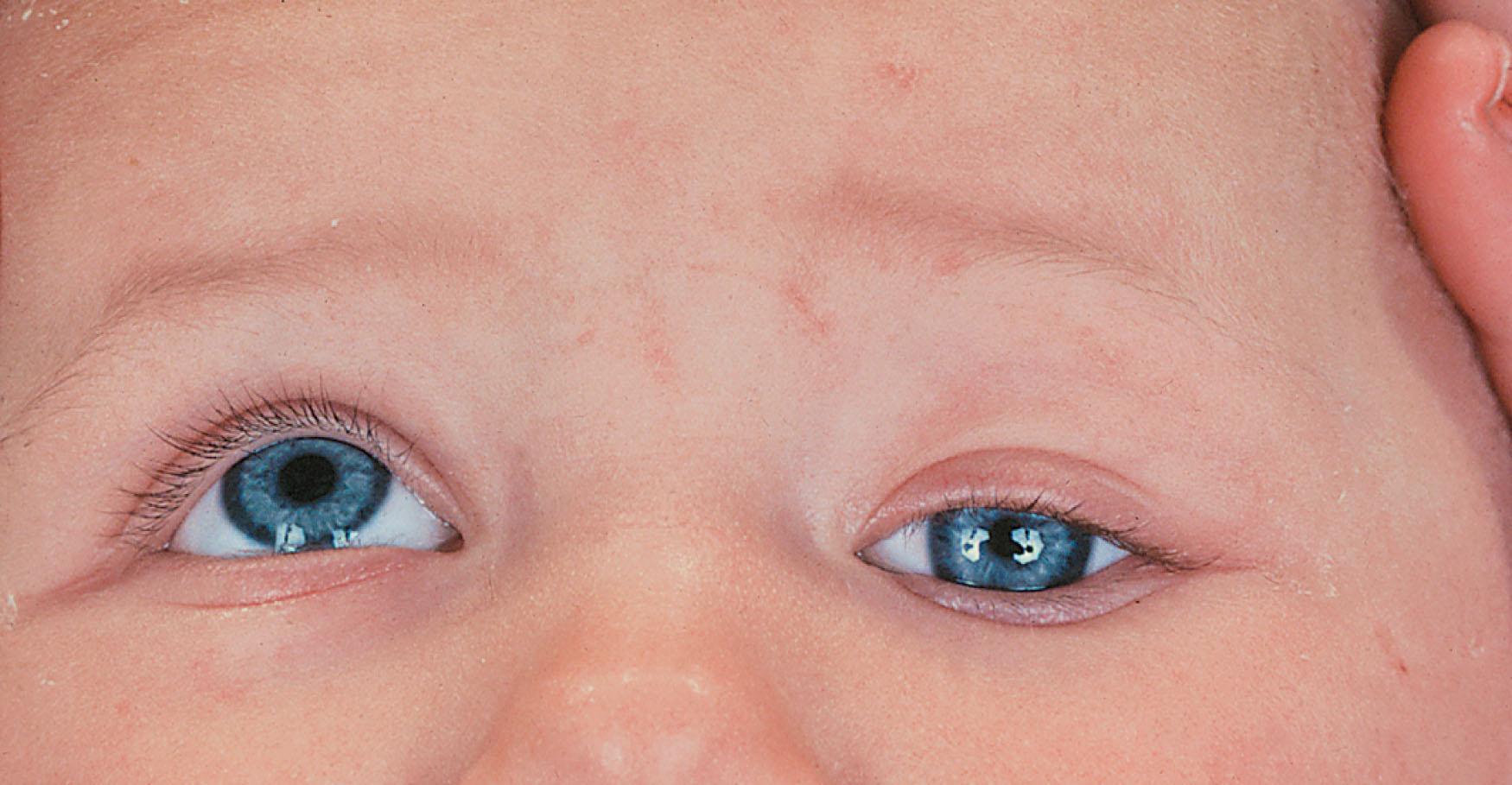
Become a Clinical Tree membership for Full access and enjoy Unlimited articles
If you are a member. Log in here